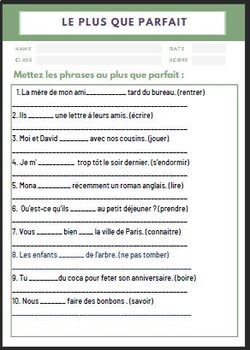
agrees in gender and in number with that direct object.) ( Note: When there is a direct object, and it precedes the participe passé ( p.p.), the p.p. On (sujet indéfini) + pronom objet direct + avait + verbe principal ( p.p.)(e.s.es). When the direct object appears as a pronoun: On (sujet indéfini) + avait + verbe principal ( p.p.) + objet direct. When the direct object appears as a noun: Ģ8B.2 Passif direct– Option 2 – ( Plus-que-parfait)

agrees in gender and in number with that subject/direct object.) ( Note: When using the "Passif direct" - Option 1" format, the subject of the verb "être" must also be the direct object of the participe passé ( p.p.) of the main verb, and because it also precedes the p.p., the p.p. Sujet (nom ou pronom, objet direct du verbe principal) + ( avais, avais, avait, avions, aviez, avaient) + été + verbe principal ( p.p.)(e.s.es).


28B.1 Passif direct– Option 1 – ( Plus-que-parfait)


 0 kommentar(er)
0 kommentar(er)
